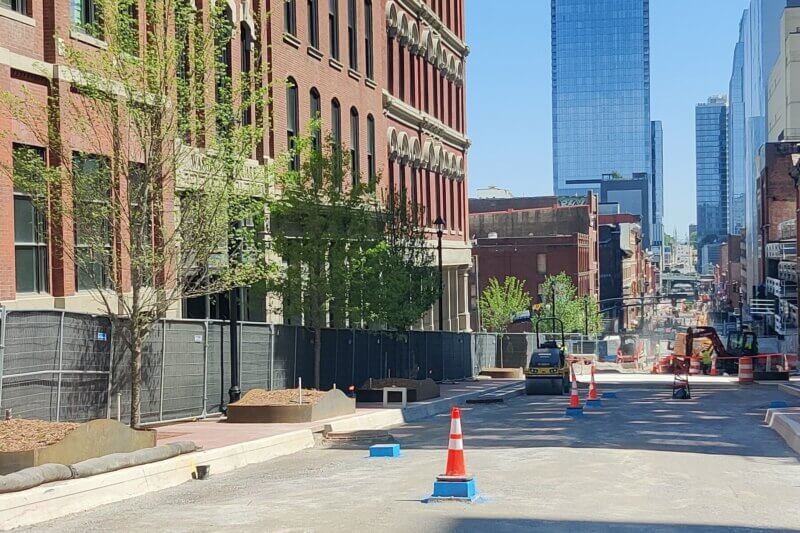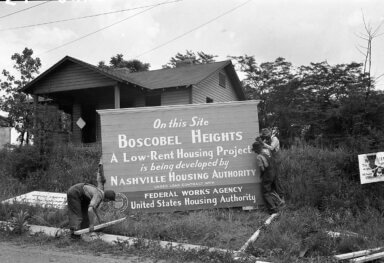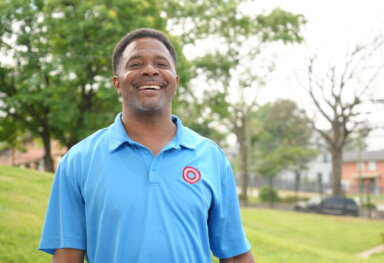April 22 is recognized around the world as Earth Day, a day to celebrate our planet and commit to sustainable practices to protect the world for future generations. Here are five ways the Second Avenue Rebuild – which is managed by MDHA on behalf of the Metropolitan Government of Nashville and Davidson County – is keeping the third rock from the sun in mind during the project’s design and construction today and every day.
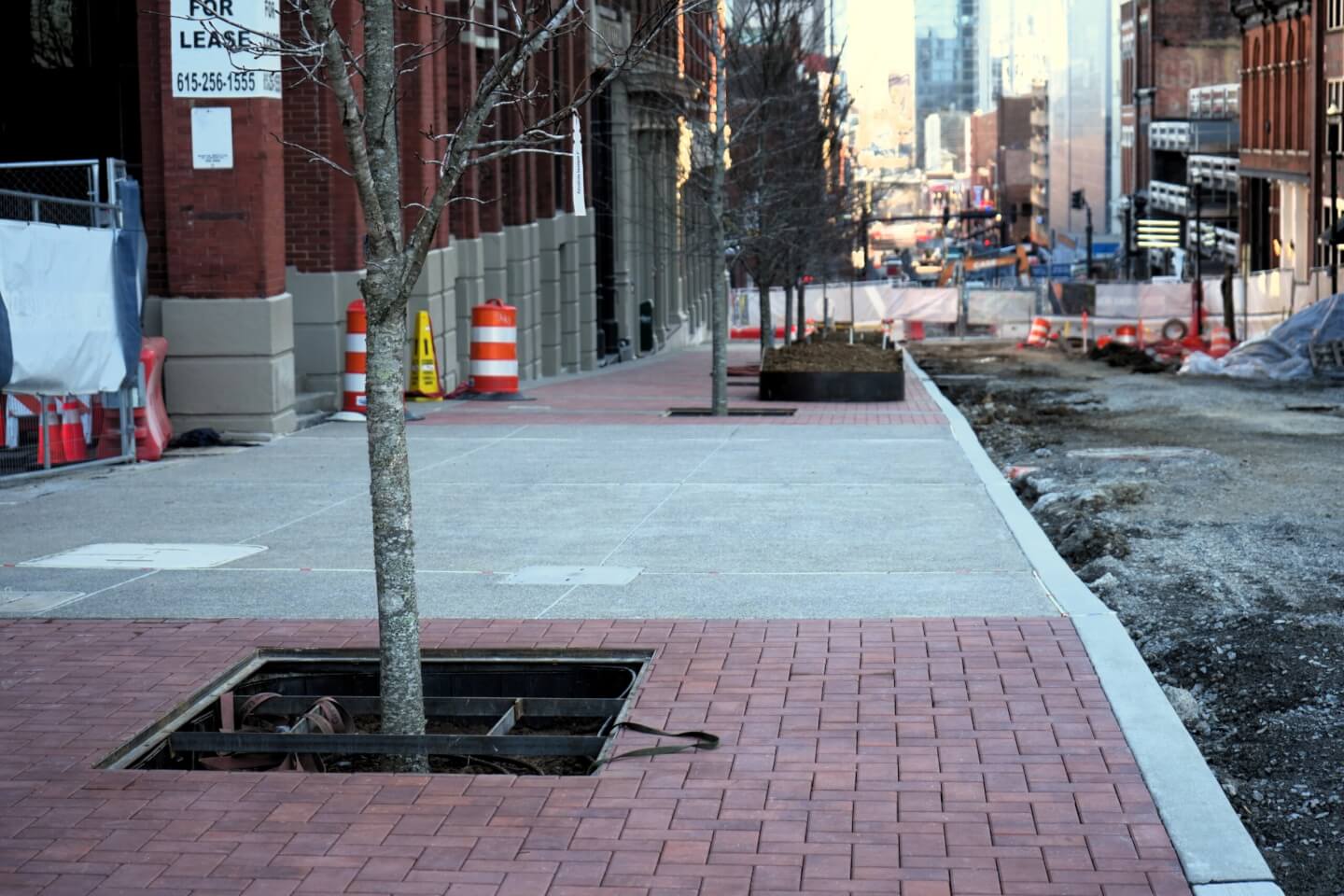
1. Green Carbon-Capturing Concrete
The Second Avenue Rebuild is using concrete produced with the CarbonCure method for the newly poured sidewalks. This is done through a process of mixing recycled CO2 in concrete production. Once injected, the CO2 chemically converts into a mineral and becomes permanently embedded in the concrete, preventing harmful greenhouse gas emissions.
You can learn more about this process from Second Avenue Rebuild contractor IMI here.
2. Solar-Powered Waste Management
Second Avenue has remained open to foot traffic during construction, and pedestrians will be able to contribute to sustainable practices in the area by simply throwing away their trash in the proper receptacles. The new Bigbelly trash and recycling bins will feature solar-powered compactors that, when full, push the trash down so that more can fit in one unit. This will combat overflowing trash bins that cause litter and means fewer bins will be needed along the sidewalks.
In addition, the project team is working with Second Avenue businesses to develop a pilot program to address their waste and recycling operations to improve the street and sidewalk conditions for outdoor dining and other uses.

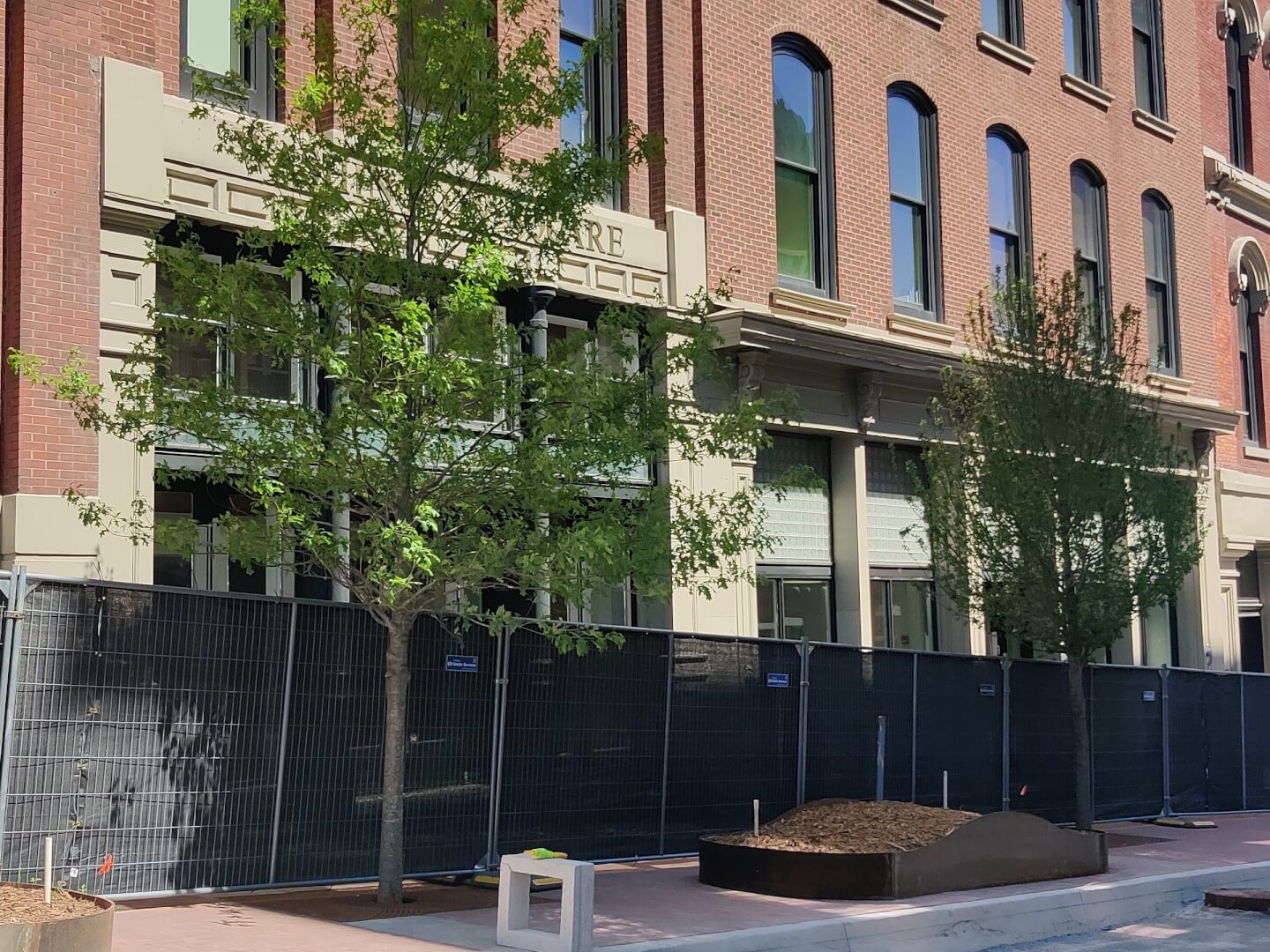
3. Nature Blooms on Second Avenue
Based on feedback from Second Avenue stakeholders, the project team specifically selected a wider variety of larger trees that thrive in urban conditions to be planted along the sidewalks. Along with large planter boxes full of flowers and other plants, the trees will add beauty to the refreshed Second Avenue, but that’s not the only benefit. Trees in urban areas also reduce noise pollution, create wildlife and plant diversity and will add natural character to our ever-growing city.
4. Stormwater Separation
Before work began on the street-level, construction crews addressed the infrastructure underground. On the north block, a new storm drain infrastructure has been installed to separate storm water from the existing combined sewer system as part of Metro Water Services’ Clean Water Nashville initiative. The initiative’s goal is to ensure the environmental health of the Cumberland River and its tributaries for future generations. New storm drain infrastructure will be installed in the middle and south blocks of the project as well.
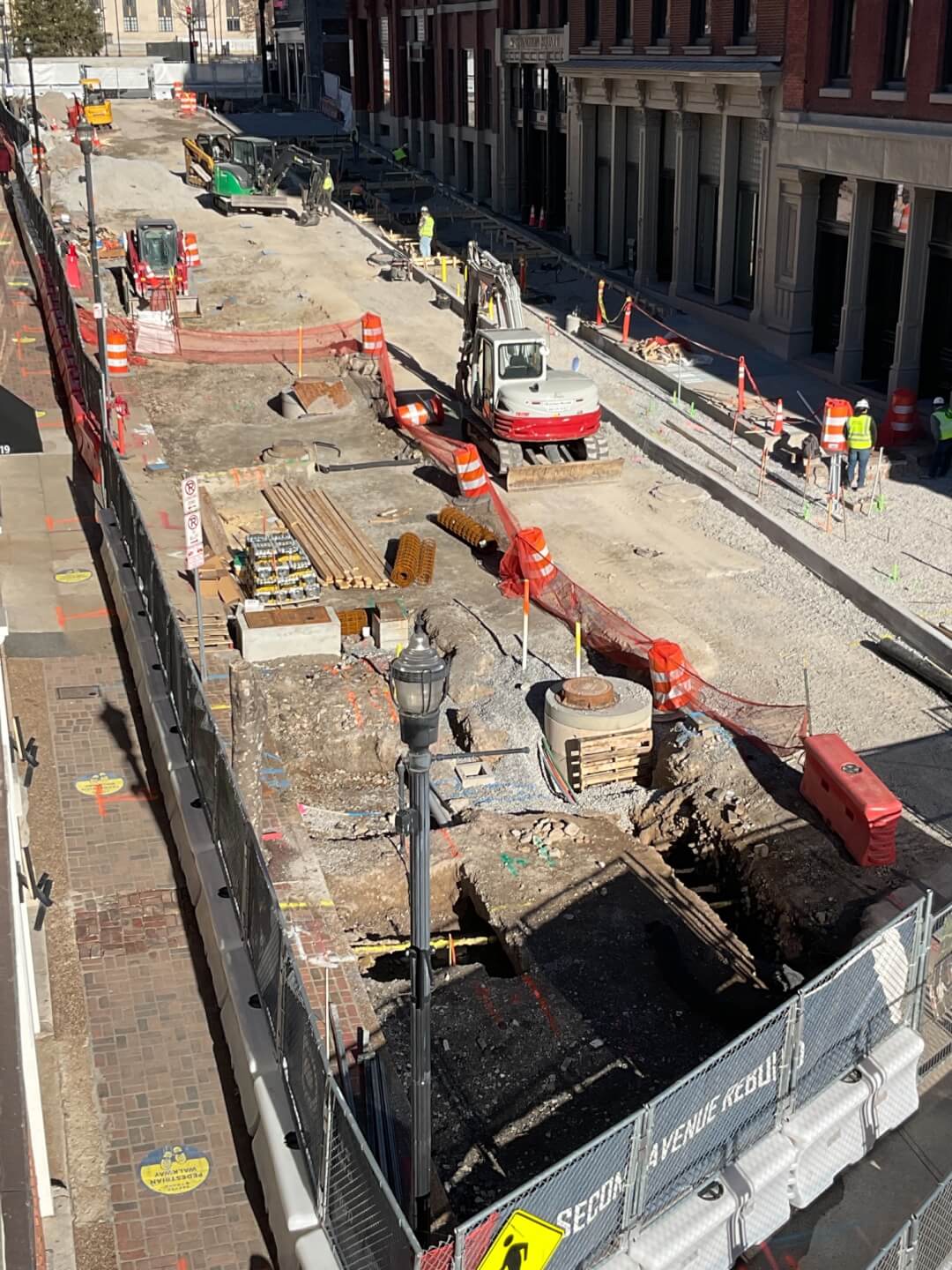
5. A Bright Idea to Limit Light Pollution
All new lighting installed as part of the Second Avenue Rebuild is Dark Sky-approved to reduce light pollution in Nashville. According to Dark Sky, light pollution can disrupt wildlife, impact human health, waste money and energy, contribute to climate change and blocks our view of the night sky. Metro Council adopted a Dark Sky Initiative for Nashville in 2021, and the Second Avenue Rebuild helped lead the charge for options that meet this lighting standard to be added to Nashville Electric Service’s approved list for other Nashville businesses to use, as well.

